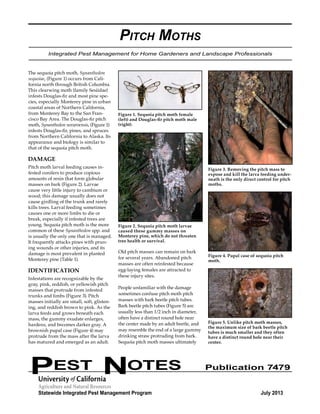The document discusses pitch moths, which are clearwing moths that infest and damage conifer trees. Specifically, it covers the sequoia pitch moth and Douglas-fir pitch moth. The moths lay eggs on injured trees, and the larvae then feed under the bark and cause the tree to exude resin, forming large hardened pitch masses. These pitch masses can be used to identify an infestation. The document provides details on the moths' life cycles, damage symptoms, and methods for removing pitch masses and controlling the larvae.



